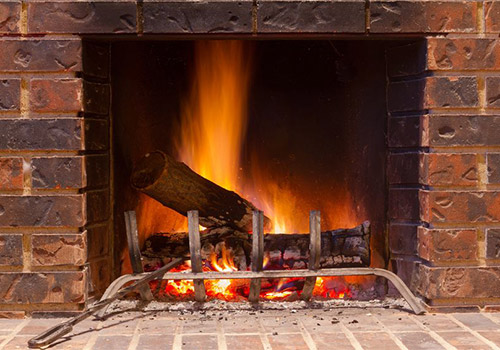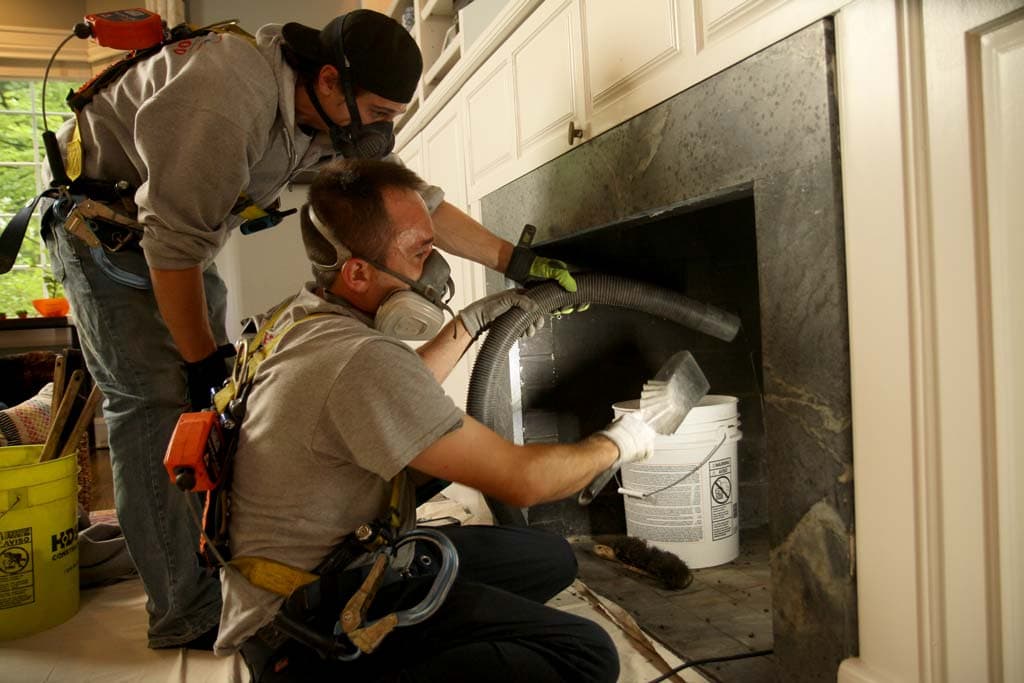How Routine Chimney Clean San Jose Can Boost Your Fire Place Efficiency
How Routine Chimney Clean San Jose Can Boost Your Fire Place Efficiency
Blog Article
Maintain Reliable Home Heating Equipments: The Significance of Routine Smokeshaft Cleansing
Past mere looks, chimney upkeep offers a crucial role in the performance and safety and security of a heating system. The repercussions of overlooking this necessary maintenance can lead to alarming effects, making it important for house owners to prioritize regular smokeshaft cleaning as an essential element of their home maintenance routine.
Importance of Smokeshaft Upkeep
Routine chimney maintenance is vital for making sure the security and effectiveness of your home heating unit. Over time, smokeshafts gather creosote, an extremely flammable substance produced by melting timber, which can result in harmful chimney fires otherwise appropriately eliminated with regular cleansing. Furthermore, debris such as fallen leaves, branches, and even animal nests can obstruct the chimney, causing smoke to support right into the home and subjecting residents to dangerous gases like carbon monoxide gas.
When the chimney is obstructed or blocked, the fire place or heating home appliance might not operate optimally, leading to reduced home heating efficiency and potentially greater power costs. By scheduling routine smokeshaft inspections and cleanings, homeowners can avoid pricey repair work and make certain that their heating system runs securely and effectively throughout the cooler months.
Avoiding Chimney Obstructions

Along with soot, debris like leaves and branches can find their means into the chimney, particularly if a chimney cap is not mounted or is damaged. These foreign items can quickly block the flue, causing smoke to support right into the home. Moreover, pets looking for refuge might build nests within the chimney, more hindering correct ventilation. Carrying out preventive procedures such as mounting a chimney cap and scheduling regular chimney assessments work ways to alleviate the threat of blockages and make sure the secure operation of your heating system.
Enhancing Furnace Effectiveness
Improving the performance of a heating system is essential for making the most of efficiency and decreasing power consumption in property and business settings. One key approach to enhance heating unit performance is by ensuring proper insulation. Insulation helps prevent heat loss, allowing the heater to keep the wanted temperature level better. In addition, upgrading to a programmable thermostat can substantially enhance efficiency by controling temperature levels based on tenancy patterns, minimizing energy waste when heating is not called for. Normal upkeep, such as cleaning or changing air filters, is critical for ideal performance. Dirty filters limit air flow, making the system work harder and eat more energy. Performing annual professional examinations can additionally determine and address any kind of problems that may be hindering performance. One more way to boost performance is by securing ducts to stop leakages, making sure that warmed air reaches its intended location without getting away. By carrying out these techniques, home heating systems can run a lot more successfully, resulting in cost financial savings and decreased environmental impact.
Reducing Fire Dangers
Enhancing the safety of a furnace involves decreasing fire dangers to protect both building and residents. Routine chimney cleansing plays a crucial duty in reducing the danger of fires. Over time, creosote, a highly combustible compound, can accumulate inside smokeshafts from the incomplete burning of wood or nonrenewable fuel sources. This buildup dramatically raises the possibilities of a smokeshaft fire, which can promptly infect the remainder of the home. By making official statement certain that the smokeshaft is free and clean of obstructions, such as nests or debris, house owners can mitigate this danger.
In addition to smokeshaft maintenance, appropriate installment and maintenance Home Page of home heating appliances are essential for fire avoidance. Maintaining flammable products at a safe range from heating resources and using safety barriers can even more reduce the danger of fires in the home.

Guaranteeing Safe Indoor Air High Quality
Interior air contamination can stem from different sources, including cooking fumes, cleaning products, pet dander, and also the burning by-products of heating systems. When chimneys are not cleaned frequently, they can end up being blocked with creosote, soot, and particles, leading to poor ventilation and possible backdrafts of unsafe gases like carbon monoxide right into the home.

Routine chimney cleaning is crucial in making sure that these dangerous materials are efficiently eliminated outside, avoiding them from flowing within the indoor setting. Prioritizing chimney upkeep as part of general interior air high quality initiatives is a positive action towards producing a safe and comfortable living environment.
Conclusion

Over time, chimneys accumulate creosote, a highly flammable substance produced by burning timber, which can lead to dangerous smokeshaft fires if not effectively gotten rid of via normal cleansing. When the smokeshaft is blocked or obstructed, the fireplace or home heating home appliance may not operate efficiently, leading to decreased home heating effectiveness and possibly higher power expenses.In enhancement to soot, particles like fallen leaves and branches can locate their means right into the chimney, specifically if a chimney cap is not set up or is damaged. Implementing precautionary steps such as mounting a chimney cap and organizing routine smokeshaft inspections are efficient ways to alleviate the risk of obstructions and ensure the risk-free procedure of your heating system.
It is necessary to prioritize chimney upkeep to avoid expensive repairs and prospective wellness risks connected with a neglected see post chimney.
Report this page